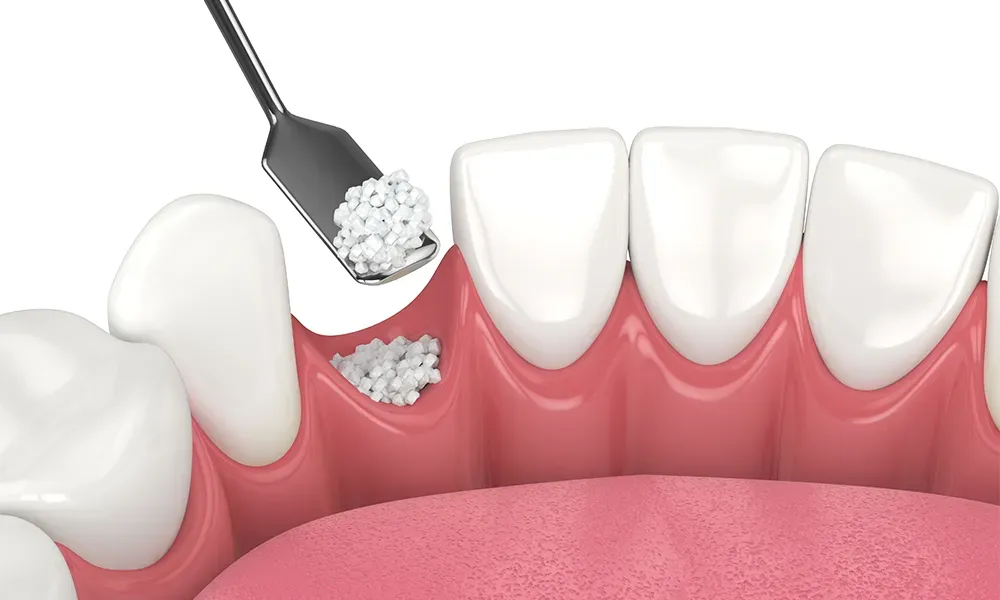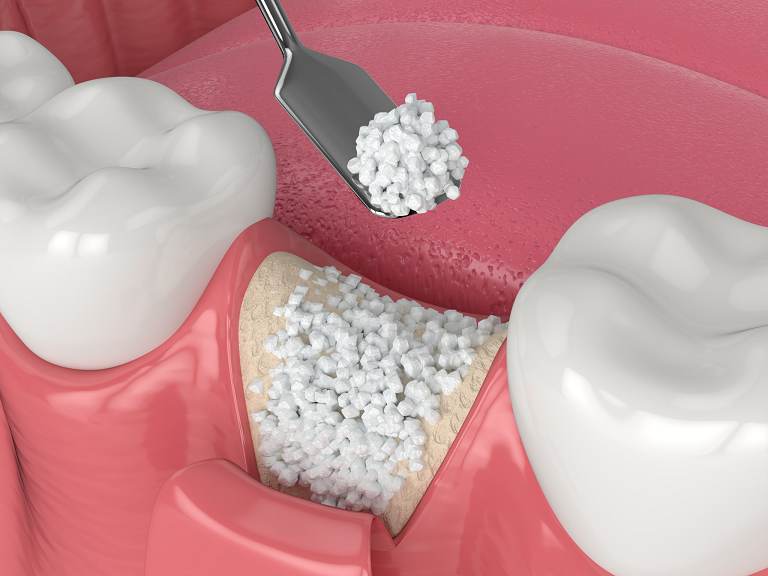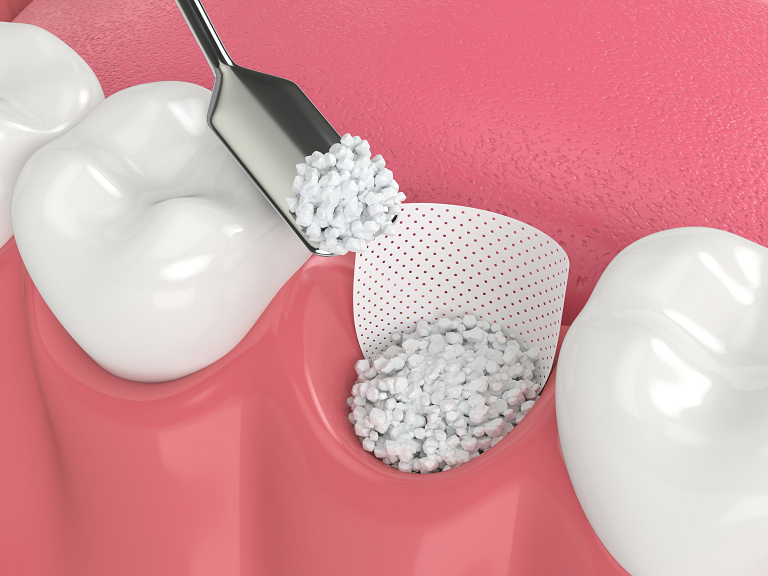Socket Preservation
Preserve Your Smile with Socket Preservation:
The Foundation for Future Dental Implants
After a tooth extraction, maintaining the health and structure of your jawbone is crucial for future dental restorations, including implants. Socket Preservation is a vital procedure that protects the empty socket left by the extracted tooth, preventing bone loss and ensuring a strong foundation for a confident smile.
What Is Socket Preservation?
Socket Preservation, also known as alveolar ridge preservation, is a surgical procedure performed immediately after a tooth extraction to preserve the bone and gum tissue in the socket where the tooth was removed. When a tooth is extracted, the surrounding bone can begin to deteriorate, leading to a loss of bone volume and density. This bone loss can compromise your ability to receive dental implants in the future and may affect the overall aesthetics of your smile.
During a Socket Preservation procedure, bone grafting material is placed into the empty socket to fill the space and support the surrounding bone. This grafting material encourages the growth of new bone cells, helping to maintain the natural contours of your jawline and preserving the height and width of the bone. In some cases, a collagen membrane or stitches may be used to protect the graft and promote healing. The result is a stable foundation that can support future dental implants or other restorations, ensuring the long-term health and appearance of your smile.

Image: Filling Socket with Bone Graft Material

Image: Bone Graft Augmenting Jaw Bone
Why Choose Socket Preservation?
Socket Preservation offers several important benefits that make it a crucial step in maintaining your oral health after a tooth extraction:
Prevents Bone Loss: By preserving the socket, this procedure helps prevent the natural bone resorption that occurs after tooth extraction, maintaining the integrity of your jawbone and reducing the risk of bone loss.
Supports Future Implants: A preserved socket provides a strong and stable foundation for future dental implants, ensuring that there is enough bone to securely anchor the implant and providing the best possible outcome for your restoration.
Maintains Facial Structure: Socket Preservation helps maintain the natural contours of your face and jawline, preventing the sunken appearance that can result from bone loss and ensuring that your smile remains aesthetically pleasing.
Reduces the Need for Additional Procedures: By preserving the bone at the time of extraction, Socket Preservation can reduce the likelihood of needing more complex procedures, such as bone grafting, in the future.
Promotes Faster Healing: The bone graft material used in Socket Preservation can promote faster and more complete healing, helping you return to normal activities sooner.
The Socket Preservation Procedure: What to Expect
Socket Preservation is typically performed immediately after a tooth extraction and involves the following steps:
1. Tooth Extraction: The process begins with the careful extraction of the tooth. Your dentist will ensure that the tooth is removed without damaging the surrounding bone, preserving as much of the socket as possible.
2.Placement of Bone Graft Material: Once the tooth is removed, the socket is filled with a bone graft material. This material may come from your own body (autograft), a donor (allograft), or a synthetic source. The grafting material helps to fill the void left by the tooth and supports the surrounding bone.

Image: Bone Graft with Collagen Membrance
3. Application of a Membrane (Optional): In some cases, a collagen membrane may be placed over the graft to protect it and promote healing. The membrane prevents the soft tissue from growing into the socket and allows the bone to regenerate.
4. Suturing: The socket is then sutured closed to keep the graft material in place and to facilitate healing. Over time, the graft material will integrate with your natural bone, preserving the socket and preventing bone loss.
5. Healing Period: After the procedure, a healing period of several months is required for the graft material to fully integrate with the bone. During this time, your dentist will monitor your progress and provide specific care instructions to ensure successful healing.

Secure Your Smile’s Future with Socket Preservation
Socket Preservation is a crucial step in maintaining the health and structure of your jawbone after a tooth extraction. By preventing bone loss and ensuring a strong foundation for future restorations, this procedure plays a vital role in preserving your smile’s aesthetics and function.
Contact us today at 302-273-8300 to schedule your consultation and learn more about how Socket Preservation can protect your oral health and prepare you for successful dental implants.
Frequently Ask Questions
Why Is Socket Preservation Necessary?
Without Socket Preservation, the bone that once supported the extracted tooth can begin to deteriorate, leading to bone loss and changes in the shape of your jawline. This can complicate future dental restorations, such as implants, and affect the aesthetics of your smile. Socket Preservation helps prevent these issues by maintaining the integrity of the socket and surrounding bone.
Is Socket Preservation Painful?
The procedure is typically performed under local anesthesia, so you should not feel pain during the process. Some discomfort, swelling, and minor bruising may occur after the procedure, but these symptoms can usually be managed with over-the-counter pain relievers and should subside within a few days.
How Long Does It Take to Heal After Socket Preservation?
The healing process can take several months, during which time the bone graft material integrates with your natural bone. Your dentist will monitor your progress and advise you when it’s appropriate to proceed with any additional dental work, such as implant placement.
What Materials Are Used in Socket Preservation?
Bone graft materials used in Socket Preservation can come from various sources, including your own bone (autograft), donor bone (allograft), animal sources (xenograft), or synthetic materials. Your dentist will recommend the best material for your specific needs.
Can Socket Preservation Be Done at the Same Time as Tooth Extraction?
Yes, Socket Preservation is typically performed immediately after a tooth extraction. This approach helps to protect the socket and begin the preservation process as soon as the tooth is removed, ensuring the best possible outcome.
Is Socket Preservation Covered by Insurance?
Coverage for Socket Preservation varies depending on your dental insurance plan. Some plans may cover part of the cost, especially if it’s considered medically necessary to prepare for future dental work, such as implants. It’s important to check with your insurance provider to understand your coverage and out-of-pocket costs.
What Happens If I Don’t Have Socket Preservation Done After an Extraction?
Without Socket Preservation, the socket may lose bone volume and density over time, which can lead to a sunken appearance in the jaw and make future dental restorations, like implants, more difficult or impossible without additional bone grafting procedures.
How Do I Care for My Mouth After Socket Preservation?
After the procedure, you should follow your dentist’s care instructions closely, which may include avoiding certain foods, keeping the area clean, and refraining from smoking. Regular follow-up visits will help ensure that the socket is healing properly.
When Can I Get a Dental Implant After Socket Preservation?
Once the socket has fully healed and the graft material has integrated with your natural bone, typically within several months, you can proceed with the placement of a dental implant. Your dentist will advise you on the optimal timing for this next step.
